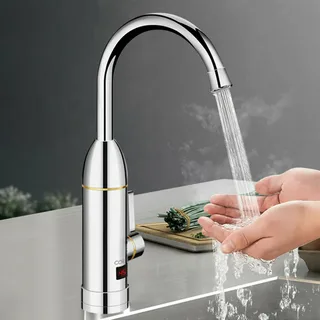Introduction to Boiling Hot Water Taps
Boiling hot water taps have become a popular addition to modern kitchens, offering convenience and efficiency. Unlike traditional kettles that require time to boil water, these taps provide instant access to boiling water, making them ideal for busy households. They are designed to deliver water at a consistent temperature, which is particularly useful for preparing tea, coffee, instant meals, and other hot beverages. This feature not only saves time but also enhances the functionality of your kitchen by streamlining tasks that involve hot water.
Benefits of Boiling Hot Water Taps
The benefits of installing a boiling hot water tap are substantial. Firstly, they save valuable time by eliminating the need for a kettle and its subsequent waiting period. For families with hectic schedules or individuals who frequently use boiling water, this is a significant advantage. Additionally, these taps reduce energy consumption as they are designed to heat only the amount of water needed, unlike kettles that may use excess energy for unnecessary boiling. They also contribute to a cleaner kitchen environment by reducing the need for additional appliances and the clutter they create. Furthermore, boiling hot water taps are often equipped with advanced filtration systems, providing cleaner and better-tasting water for all your needs.
Installation Process
Installing a boiling hot water tap requires careful consideration and professional expertise. The process involves several steps, including the selection of the right tap model, preparation of the installation site, and connection to the existing plumbing system. Most boiling hot water taps come with a comprehensive installation guide, but it’s generally recommended to hire a licensed plumber to ensure proper setup. The installation typically includes fitting a new under-sink boiler or water heater, connecting it to the tap, and ensuring all safety features are operational. Additionally, the plumbing system may need to be adjusted to accommodate the new tap, which can involve rerouting pipes or making modifications to existing connections.
Maintenance and Care
Maintaining a boiling hot water tap is crucial for its longevity and optimal performance. Regular maintenance involves cleaning the tap and the surrounding area to prevent build-up of limescale and other deposits. Many models come with self-cleaning features, but manual cleaning may still be necessary. The filter, if present, should be checked and replaced as per the manufacturer’s recommendations to ensure the water remains pure and free of contaminants. It’s also important to periodically check the boiler or heater for any signs of wear or malfunction. Regular servicing by a professional can help address potential issues before they become major problems, ensuring the tap remains in good working order.
In conclusion, a boiling hot water tap is a valuable addition to any kitchen, offering time-saving benefits, energy efficiency, and convenience. By understanding its advantages, installation requirements, and maintenance needs, you can make an informed decision about integrating this technology into your home.


